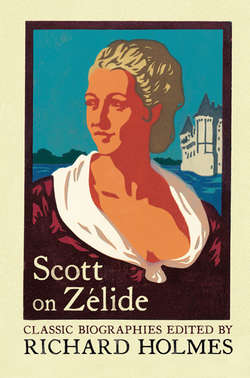Читать книгу Scott on Zélide: Portrait of Zélide by Geoffrey Scott - Richard Holmes - Страница 12
8
ОглавлениеFor all these limitations of sympathy and perspective, Geoffrey Scott’s biography remains a subtle triumph, and a considerable landmark. It changed forever the way English biographers wrote (or simply failed to write) about women. It recognised that women’s lives had different shapes from men’s, different emotional patterns of achievement and failure. It stressed the value of a psychological portrait of Zélide, over a mere chronology, but never descended to (the then fashionable) Freudian reductionism. It suggested that from a woman’s perspective, the very idea of ‘destiny’ was different. Zélide was both subject to men’s careers within the existing frame of eighteenth-century conventions, and yet always, stubbornly and subversively, independent of them.
The biography was a deserved success when finally published in 1925. It was widely praised by the reviewers, the TLS remarking that it was ‘a biography as acute, brilliant and witty as any that has appeared in recent years.’ Edmund Gosse in the Sunday Times added Scott to the group of ‘three or four young writers’ (including Strachey) who had put to flight the ‘wallowing monsters’ of Victorian biography, through ‘delicacy of irony, moderation of range, refinement and reserve’. The book won the James Tate Black Memorial Prize, and ran to three editions in the next five years. Scott himself had the odd experience of appearing in the Vogue Hall of Fame for 1925.
Not surprisingly, there were different reactions from within his own literary circle. Mary Berenson and Edith Wharton loyally praised it, Edith greeting it as ‘an exquisite piece of work’. But Vita Sackville-West, perhaps inspired by her new passion for Virginia Woolf, felt it was too flippant, too flashy and not sympathetic enough to Zélide as a woman writer. Francis Birrell, the voice of Bloomsbury, writing in The Nation gently reproached it as ‘very readable…fashionable, cosmopolitan, and a trifle over-painted’. Years later Harold Nicolson, Vita’s husband, described it with masterful ambiguity as a ‘delicate biography’.
Nonetheless it remains a memorable prologue to the full opening up of women’s biography in the twentieth-century. It is an early attempt to recover the importance of the woman writer’s role in the culture of Europe, and particularly in the long and rich tradition of Dutch humanism. The early writings of Zélide represent a vivid response to Voltaire, and his contes philoso-phiques. While the emotional confrontation between Zélide (or rather Madame de Charrière) and Madame de Staël, and the consequent battle for Benjamin Constant’s soul, is brilliantly deployed by Scott to sum up the intellectual confrontation between Enlightenment and Romantic values.
Raymond Mortimer saw this as one of the most original features of the biography, the picture of ‘a conflict between two centuries, two states of mind, almost one might say, two civilizations’. He also added shrewdly: ‘[Scott] is a little in love with Madame de Charrière, and so are you, before the book is done.’
Many of these judgements have proved remarkable perceptive. It is now becoming clear that Geoffrey Scott’s work forms part of the 1920’s revolution in British biography, championing a briefer, more stylish and inventive form. It needs to be set beside Strachey’s Queen Victoria (1921), André Maurois’s Ariel, ou La Vie de Shelley (1925), and Harold Nicolson’s Some People (1927).
Scott himself put his claim modestly, but very well, in the note appended to the end of the book. He first makes full acknowledgement to the faithful scholarship of Philippe Godet, and then adds: ‘All I have here done is to catch an image of her in a single light, and to make from a single angle the best drawing I can of Zélide, as I believe her to have been. I have sought to give her the reality of fiction; but my material is fact.’
